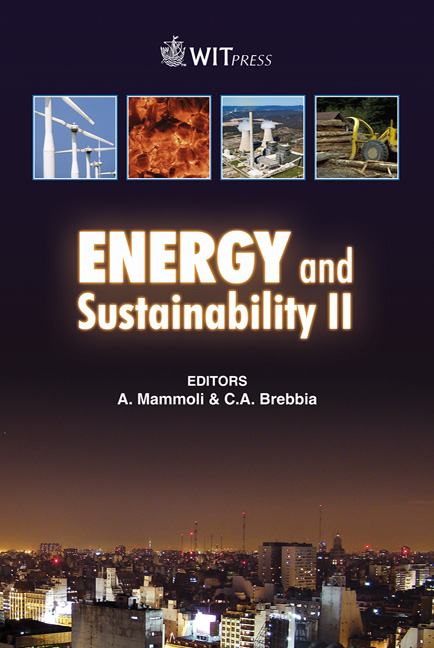Numerical Analysis Of A Minichannel Solar Collector For CO2-based Rankine Cycle Applications
Price
Free (open access)
Transaction
Volume
121
Pages
12
Published
2009
Size
555 kb
Paper DOI
10.2495/ESUS090031
Copyright
WIT Press
Author(s)
G. Diaz
Abstract
The combined effects of increasing energy consumption, higher fuel prices, and green-house-related climate change are challenging universities and industry to develop more efficient and sustainable ways to produce power, heating, and cooling for industrial, commercial, and residential applications. The utilization of renewable energy sources is receiving considerable attention as a non-resource-depleting approach that reduces the emissions of pollutants and green-house gases to the atmosphere. Solar thermal systems have the capacity to provide heat in a sustainable way for a variety of applications due to the relatively large range of temperatures that different collector configurations can attain. Non-imaging-optics based compound parabolic concentrating reflectors combined with evacuated-tube collectors can operate at 200oC at efficiencies near 50% without the need for tracking. In addition, a trend towards natural working fluids to reduce the effects of global warming and ozone-layer depletion has sparked the proposal of several refrigeration and combined cooling, heating and power cycles using CO2. This paper analyzes the performance of a minichannel-based evacuated-tube solar collector operating with supercritical CO2 suitable for solar-driven Rankine cycle applications. Keywords: minichannel, solar collector, Rankine cycle, cogeneration.
Keywords
minichannel, solar collector, Rankine cycle, cogeneration





